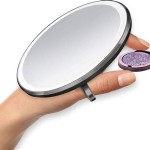Troubleshooting Mirroring Issues: Windows 10 to Samsung TV
Mirroring a Windows 10 computer screen to a Samsung TV can significantly enhance productivity, facilitate presentations, and provide a larger display for entertainment purposes. However, users frequently encounter difficulties establishing a stable and reliable connection. This article provides a comprehensive guide to diagnosing and resolving common problems that prevent successful screen mirroring between Windows 10 devices and Samsung TVs.
The process of mirroring involves the transmission of the computer's display signal to the TV via a wireless connection, often utilizing technologies such as Miracast or WiDi (Wireless Display). Factors influencing the success of this process include network connectivity, device compatibility, driver configurations, and specific settings on both the Windows 10 computer and the Samsung TV. Failure in any of these areas can lead to mirroring failure.
Key Point 1: Verifying Device Compatibility and System Requirements
Before troubleshooting specific problems, it's crucial to ensure both the Windows 10 computer and the Samsung TV meet the minimum requirements for wireless display functionality. This involves checking the hardware and software capabilities of each device.
On the Windows 10 side, the computer must support Miracast. Most modern laptops and desktops equipped with Intel, AMD, or NVIDIA graphics cards manufactured within the last several years should be compatible. To confirm Miracast support, open the Command Prompt (as an administrator) and type "dxdiag". Run the command and wait for the DirectX Diagnostic Tool to load. Once loaded, click "Save All Information" and save the text file to a convenient location. Open the saved file and search for "Miracast". If the text displays "Available, with HDCP", the computer supports Miracast. If Miracast is not supported, the device's hardware is likely incompatible and an external Miracast adapter may be necessary.
The graphics card drivers also play a critical role. Outdated or corrupted drivers can prevent the computer from establishing a stable wireless display connection. Navigate to the Device Manager (search for "Device Manager" in the Windows search bar). Expand the "Display adapters" section and right-click on the graphics card. Select "Update driver" and choose "Search automatically for drivers". Windows will attempt to find and install the latest drivers. If this doesn't resolve the issue, consider visiting the graphics card manufacturer's website (Intel, AMD, or NVIDIA) and downloading the latest drivers directly. Uninstall the existing drivers before installing the new ones for a clean installation.
Regarding the Samsung TV, confirm that it is a smart TV model released within the last decade. These models typically include built-in Miracast or Screen Mirroring functionality. Refer to the TV's user manual or the manufacturer's website for specific information about compatibility. Navigate to the TV's settings menu and look for options such as "Screen Mirroring," "Miracast," or "Wireless Display". Ensure that this feature is enabled. The exact location of this setting varies depending on the TV model and firmware version.
In addition to hardware and software compatibility, the operating system of both devices plays a role. Ensure the Windows 10 computer is running the latest version of the operating system. Navigate to Settings -> Update & Security -> Windows Update and check for updates. Install any available updates, including cumulative updates and feature updates. Samsung TVs also require regular firmware updates. Check for updates in the TV's settings menu, typically under "Support" or "Software Update". Keeping both devices up-to-date helps resolve compatibility issues and security vulnerabilities that could interfere with screen mirroring.
Key Point 2: Addressing Network Connectivity and Wi-Fi Interference
A stable and reliable Wi-Fi network is essential for successful screen mirroring. Both the Windows 10 computer and the Samsung TV must be connected to the same Wi-Fi network. Verify that both devices are connected to the correct network and that the network connection is strong and stable.
Weak Wi-Fi signals or interference from other devices can disrupt the screen mirroring process. Move the computer and the TV closer to the Wi-Fi router to improve signal strength. Remove any potential sources of interference, such as microwave ovens, cordless phones, and Bluetooth devices, that operate on the same 2.4 GHz frequency as Wi-Fi. Consider switching to the 5 GHz Wi-Fi band if the router and both devices support it. The 5 GHz band generally experiences less interference and provides faster data transfer rates.
Firewall settings on the Windows 10 computer can also block the necessary network communication required for screen mirroring. Ensure that the Windows Firewall is not blocking Miracast or wireless display functionality. To check firewall settings, go to Control Panel -> System and Security -> Windows Defender Firewall -> Allowed apps. Look for entries related to "Wireless Display" or "Miracast." If they are not listed, add them to the list of allowed apps and ensure that both "Private" and "Public" network boxes are checked.
Sometimes, a simple network reset can resolve connectivity problems. On the Windows 10 computer, go to Settings -> Network & Internet -> Status -> Network reset. This will remove and reinstall all network adapters and reset network settings to their default values. After the reset, you may need to reconnect to the Wi-Fi network and reconfigure any custom network settings. On the Samsung TV, try restarting the network connection by disconnecting and reconnecting to the Wi-Fi network in the TV's settings menu.
Router firmware also plays a role in network performance. Ensure that the Wi-Fi router is running the latest firmware version. Check the router manufacturer's website for updates and follow their instructions for installing the firmware. Outdated router firmware can contain bugs and security vulnerabilities that can negatively impact network performance and stability.
Key Point 3: Troubleshooting Specific Settings and Configurations
Several settings on both the Windows 10 computer and the Samsung TV can impact the screen mirroring process. Proper configuration of these settings is crucial for establishing a successful connection.
On the Windows 10 computer, use the "Project" feature to initiate screen mirroring. Press the Windows key + P to open the Project menu. Choose the desired display mode: "Duplicate" (mirrors the screen), "Extend" (extends the desktop), "Second screen only" (displays only on the TV), or "PC screen only" (displays only on the computer screen). Select "Connect to a wireless display" to search for available devices. If the Samsung TV is not listed, click "Troubleshoot" for further assistance. The Troubleshooter may identify and resolve common problems that are preventing the TV from being detected.
Ensure that the Samsung TV is in the correct input source. Use the TV's remote control to select the input source that corresponds to the Screen Mirroring or Miracast feature. This is often labeled as "Screen Mirroring," "Miracast," or "Wireless Display." If the TV is set to the wrong input source, it will not be able to receive the signal from the Windows 10 computer.
Some Samsung TVs require explicit permission for devices to connect via screen mirroring. When the Windows 10 computer attempts to connect, a prompt may appear on the TV screen asking for permission to allow the connection. Ensure that you select "Allow" or "Accept" to grant access to the computer. If you accidentally select "Deny," you may need to reset the Screen Mirroring feature on the TV or remove the computer from the list of blocked devices in the TV's settings menu.
Power saving settings on the Windows 10 computer can sometimes interfere with screen mirroring. In the Power Options control panel, ensure that the power plan is set to "High performance" to prevent the computer from entering a low-power state that could disrupt the wireless display connection. Also, check the advanced power settings and ensure that the wireless adapter settings are configured for maximum performance.
If the connection is established but the video quality is poor or the connection is unstable, try reducing the screen resolution on the Windows 10 computer. Lowering the resolution can reduce the amount of data that needs to be transmitted wirelessly, which can improve performance. Right-click on the desktop, select "Display settings," and adjust the "Resolution" setting accordingly.
Consider using a dedicated Miracast adapter if the built-in wireless display functionality is unreliable. These adapters plug into the HDMI port of the TV and provide a dedicated wireless connection for screen mirroring. They often offer better performance and compatibility than the built-in features.
Finally, ensure that the "Network discovery" and "File and printer sharing" settings are enabled on the Windows 10 computer. These settings allow the computer to discover other devices on the network and share resources, which can be necessary for successful screen mirroring. Go to Control Panel -> Network and Internet -> Network and Sharing Center -> Advanced sharing settings. Ensure that "Turn on network discovery" and "Turn on file and printer sharing" are selected.

How To Use The Pc On Tv Your Samsung Smart Caribbean

How To Connect Windows 10 Laptop Samsung Smart Tv With Wi Fi Connection

How To Screen Mirror Stream Laptop Pc Tv Wireless No Adapters

How To Cast Windows 10 Android Tv Or Any Smart Beebom

How To Screen Mirror Cast Windows 11 Samsung 4k Smart Tv Roku

How To Cast Media From Windows 10 Pc Your Smart Tv Dignited

15 Ways To Fix Screen Mirror Or Cast Not Working On Samsung Tv Techwiser

How To Mirror From Your Samsung Smartphone Tv New Zealand

How To Cast Your Pc Tv Computer Screen Mirror Windows 10 Smart

6 Ultimate Ways To Screen Mirror Samsung Tablet 2024 Latest








